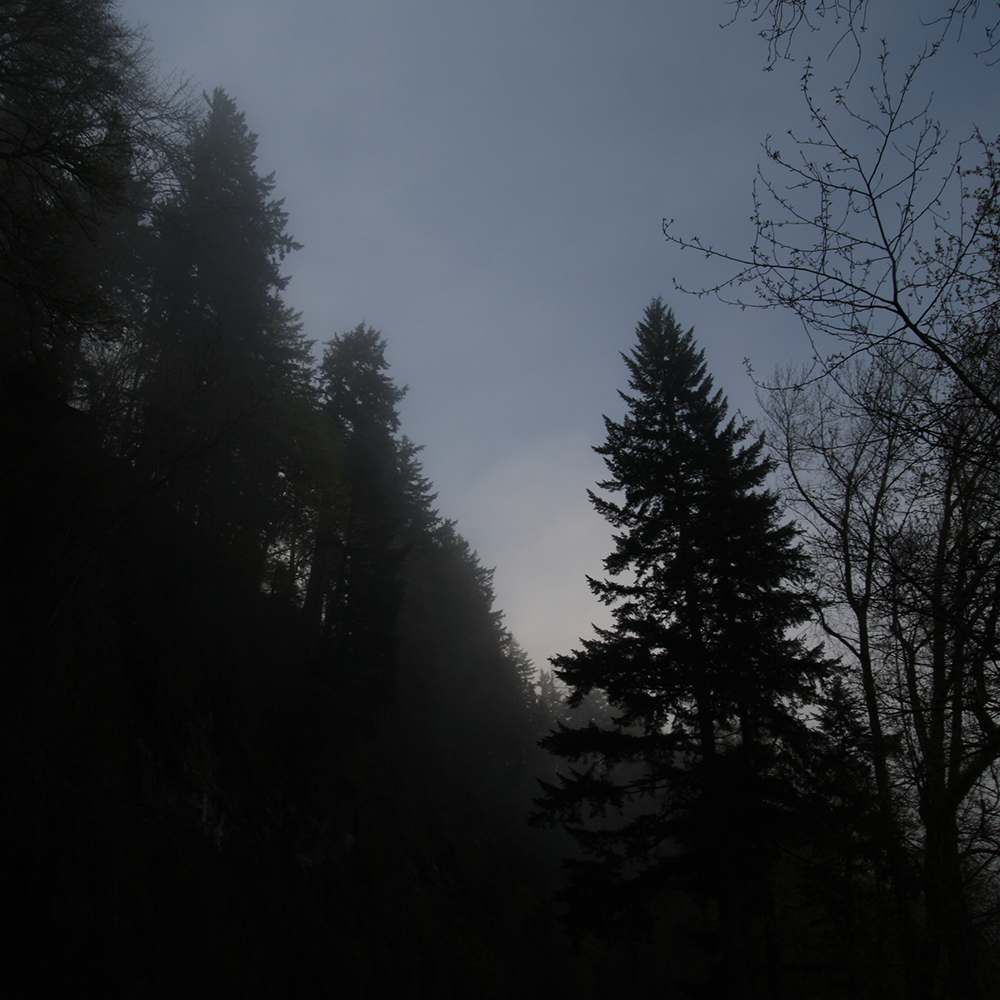Qviksyndi Forest
The Qviksyndi Forest is a renowned wooded expanse lying east and south of the Wimahl River, occupying the eastern banks of the Qviksyndi River—a significant tributary that originates on the north slopes of Wy’east, the tallest peak of the central Montagnes de Cascade. Shrouded in dense canopies of cedar, fir, and black cottonwood, the forest is both a natural wonder and a source of deep-seated unease to those who live near its moss-laden boundaries.
Land Tenure and the Lease Curse
Since the First Confederation, the land known as Qviksyndi Forest has never been permanently owned, but rather granted in long-term lease by the central authority. Throughout recorded history, each family awarded a generational lease has flourished, only to founder at the third generation. Each third-generation leaseholder has faced the tragic birth of children with inexplicable, fatal defects, invariably resulting in the dying out of the family line. This repeated pattern is locally referred to as “The Qviksyndi Curse,” and believed by some to be the forest’s own means of protecting itself from overuse or disrespect.
Mystical Reputation and Woodland Lore
The forest is as rich in myth as it is in flora and fauna. Indigenous Chinook and Clackamas legends refer to Qviksyndi as the “Shadowed Vale of Elders,” home to guardian spirits and lurking tricksters. Subsequently, settlers from the Empire of Australia introduced tales of trolls and gnomes, who are said to dwell under the twisted roots of ancient trees. It is not uncommon to hear accounts of:
- The Wailing Sprites—Luminous beings who appear along the river at dusk, enticing children into the underbrush with songs that only stop when the moon is full.
- The Stoneheart Troll—A solitary, massive figure purported to turn unwelcome trespassers into moss-laden pillars of stone.
- The Bluecap Faeries—Elusive helpers or mischief-makers, depending on one’s intent, whose blue-glowing caps are seen on foggy nights before livestock disappear.
Perhaps the most chilling of these is the legend of Utqwan the Weaver, a water baby spirit who spins invisible threads between family members. When outsiders settle too deeply into the land, Utqwan is said to unravel these threads, causing their bloodlines to end with a generation lost in sleep.
Unusual Fauna and Sightings
The Qviksyndi Forest is home to several creatures unique to Cascadian legend:
- Haffner Snake—A moss-green serpent that emits a musical hissing and is said to cause mirages in travelers who hear its song for too long.
- Qviksyndi Cat—A large, striped feline, rarely seen but often blamed for livestock deaths and strange pawprints around farmsteads. Some claim its fur can shift colors to match the surrounding brush.
- Fenrir Wolf—Unlike the timber wolves of the north, the Fenrir is enormous, jet-black, and believed to hunt alone. Local wisdom holds that meeting its golden gaze leads to seven years of misfortune.
Equally persistent are accounts of the Quinkin (Yowie), an ape-like creature with deep black fur, who reportedly stands a full meter taller than any human and is known for powerful, echoing calls on moonless nights. The most famous sighting came during the Year of the Long Shadows (1597), when an entire logging party vanished save one survivor, who claimed to have been spared after leaving bread and mountain honey on a moss stump as an offering.
Legends and Notable Events
- The Night of Dancing Ghosts (1342) — On a night when the river swelled with spring melt, villagers reported hundreds of small, luminous figures dancing across the surface of the water. In the aftermath, all salmon traps were found empty, an omen interpreted as punishment for greed.
- The Disappearance of the Leowyn Clan (1679) — The last of the forest’s third-generation lessees, the Leowyn family, vanished overnight. Their fires were still warm, and a circle of mushrooms grew around their beds. Only a blue ribbon, belonging to the youngest daughter, was ever recovered.
- The Pact of Four Stones (1523) — Elders from the Clatsop and Chinook nations, joined by Australian settler Bernard d’Homme Nouveau and healer Sahalie, reportedly brokered a truce with the forest spirits. Four river stones, now held in the Museum of Port Sahalie, are said to be imbued with protective wards for future visitors.
Modern Exploration and Protections
Surveys by the Pørtland Academy of Natural Sciences continue, but large tracts remain forbidden to all but the most seasoned local guides. Recent efforts by the Free Council to protect the forest as a Sacred Heritage Site have kept development at bay. Even today, the Qviksyndi Forest inspires awe, unease, and a steady stream of tales both wondrous and harrowing in the evolving folklore of Cascadia.

